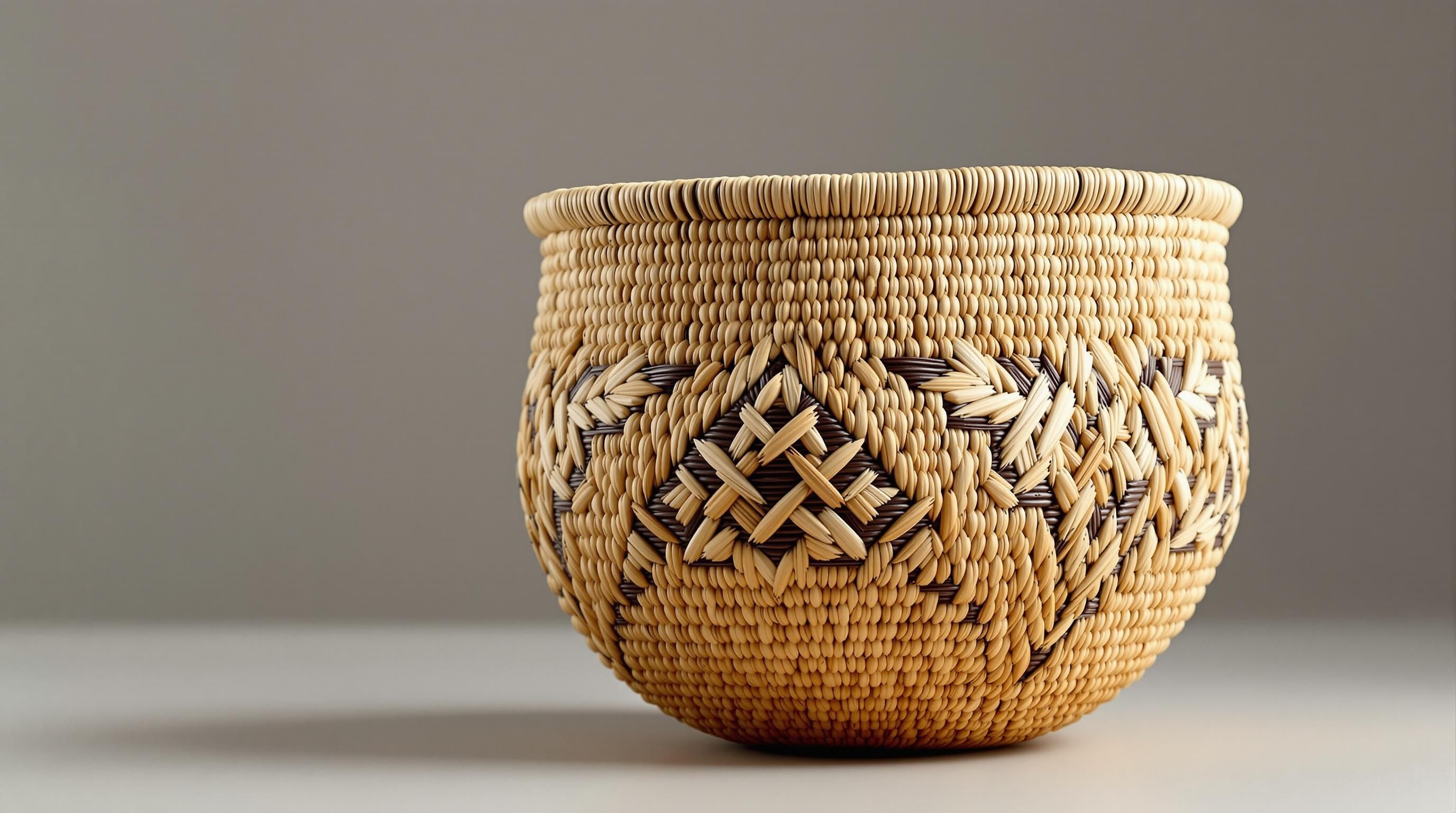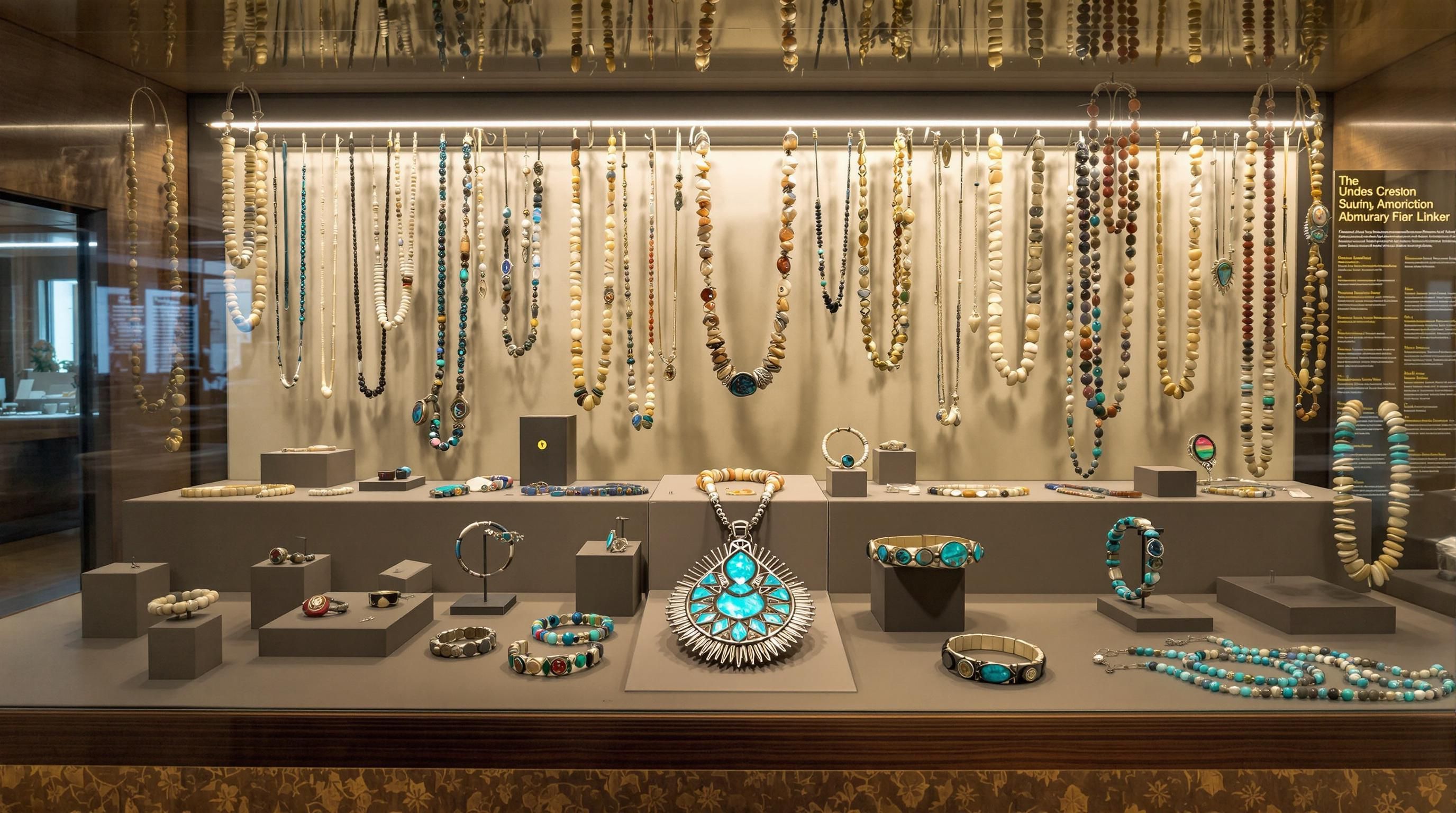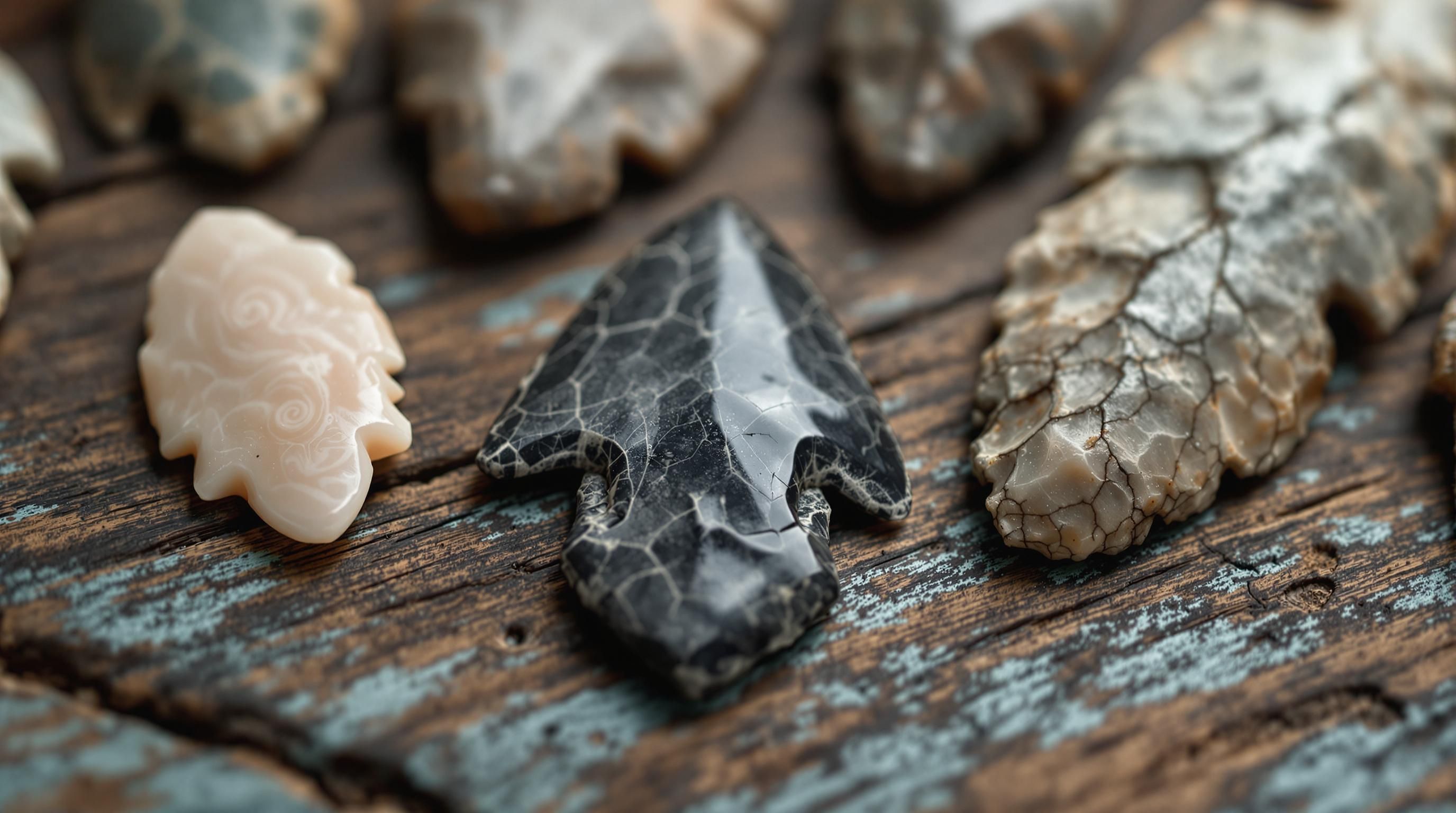Native American artifacts represent a rich cultural heritage spanning thousands of years, offering valuable insights into Indigenous histories and traditions. Whether you’ve discovered an item while exploring your property or are considering adding to a collection, knowing how to properly identify authentic Native American artifacts is essential. This comprehensive guide will help you recognize key characteristics, understand different artifact types, and learn the proper protocols for artifact identification and preservation.
Understanding Native American Artifacts
Before attempting to identify any potential Native American artifact, it’s important to understand the ethical and legal considerations. In the United States, laws like the Native American Graves Protection and Repatriation Act (NAGPRA) and the Archaeological Resources Protection Act (ARPA) protect cultural items and archaeological resources on federal and tribal lands. Always ensure you’re acting within legal boundaries when collecting or identifying artifacts.
Native American Artifact Facts
Major Types of Native American Artifacts
Projectile Points and Arrowheads
Projectile points are among the most commonly found and collected Native American artifacts. These stone tools were attached to spears, darts, or arrows and used for hunting and warfare. Identifying authentic projectile points requires examining material, shape, craftsmanship, and regional patterns.
Key identification features of projectile points include:
Material: Most points are made from flint, chert, obsidian, or other lithic materials that could be flaked to create sharp edges.
Flaking Patterns: Authentic points show deliberate flaking patterns where small pieces were systematically removed to shape the tool.
Base Design: The base (bottom part) of projectile points varies significantly by culture and time period—from notched to stemmed to lanceolate designs.
Regional Variations: Point styles vary dramatically by region, with distinct types associated with specific cultural periods and geographic areas.
The Arrowhead Identification Database catalogs over 1,000 individual point types with 60,000+ photographs, serving as an invaluable resource for identification.
Stone Tools and Implements
Beyond projectile points, Native Americans created a wide variety of stone tools for daily use, including:
Axes and Celts: Ground stone tools with sharp edges used for woodworking and clearing.
Scrapers: Tools used to clean hides, shape wood, or process plant materials.
Grinding Stones: Used for processing grains, seeds, and other food items.
Hammerstones: Used for percussion flaking when making other tools.

When identifying stone tools, look for these characteristics:
- Evidence of Use-Wear: Authentic tools often show wear patterns consistent with their purpose.
- Intentional Shaping: Tools display evidence of deliberate shaping through grinding, flaking, or pecking.
- Material Selection: Specific stone types were chosen for particular tools based on their properties.
- Regional Patterns: Tool styles and materials often reflect local resources and traditions.
Pottery and Ceramics
Pottery provides valuable insights into Native American cultures, as styles, decorations, and manufacturing techniques varied widely across regions and time periods.
Key identification features of Native American pottery include:
Construction Method: Most traditional pottery was hand-built using coil, paddle-and-anvil, or modeling techniques, rather than wheel-thrown.
Surface Treatment: Look for distinctive treatments such as polishing, burnishing, incising, painting, or stamping.
Temper Material: Materials added to clay for strength (such as sand, crushed shell, or plant fibers) can indicate regional origin.
Firing Evidence: Traditional pottery was often open-fired, resulting in distinctive fire clouds or color variations.
Decorative Elements: Design motifs and patterns often reflect specific cultural traditions and time periods.
How to Identify Authentic Artifacts
Authentication Checklist
Artifact Authentication Indicators
Check for these features when identifying potential artifacts
- Evidence of human modification (flaking, grinding, carving)
- Appropriate material for the artifact type and region
- Presence of patina or surface aging consistent with antiquity
- Use-wear patterns consistent with the tool's purpose
- Stylistic elements consistent with known cultural patterns
- Weight and density appropriate for material type
- No evidence of modern manufacturing techniques
Signs of Authenticity vs. Natural Objects
Many people mistake naturally occurring rocks for artifacts. Here’s how to tell the difference:
Deliberate Flaking: Authentic stone tools show intentional, systematic removal of flakes to create sharp edges or specific shapes.
Symmetry and Design: Human-made artifacts typically display greater symmetry and purposeful design than natural stones.
Use-Wear Patterns: Authentic tools often show distinctive patterns of wear consistent with human use.
Material Selection: Native Americans selected specific stone types for particular tools based on their properties.
As one Quora respondent noted, “To be an artifact, it should show some wear. If flint or obsidian, flakes will be removed, shaping it up. Hammerstones will show use, often with pitting on the ends.”
Spotting Modern Reproductions
The market for Native American artifacts has unfortunately led to numerous reproductions and fakes. Here’s how to spot them:
Manufacturing Marks: Look for evidence of modern tools like saw marks, drill holes with perfectly circular edges, or machine polishing.
Artificial Aging: Reproductions may show artificial patinas or staining intended to mimic age.
Inconsistent Materials: Reproductions might use materials not historically available in the region they claim to represent.
Unrealistic Condition: Artifacts in suspiciously perfect condition may be modern reproductions.
Price Too Good to Be True: Extremely rare or high-quality artifacts offered at surprisingly low prices often indicate reproductions.
Major Cultural Periods in North American Archaeology
- 15,000-8,000 BCE
Paleo-Indian Period
Earliest human inhabitants in North America. Characterized by distinctive fluted projectile points like Clovis and Folsom, used for hunting megafauna like mammoths. - 8,000-1,000 BCE
Archaic Period
Development of more regional cultural traditions. More diverse tool assemblages, ground stone tools, and early experiments with pottery in some regions. - 1,000 BCE-1,000 CE
Woodland Period
Introduction of bow and arrow technology in many regions, widespread pottery use, increased agriculture, and development of complex societies. - 1,000-1,500 CE
Mississippian/Late Prehistoric
Large ceremonial centers, complex chiefdoms, intensive agriculture, and distinctive ceramic and artistic traditions in many regions. - 1,500-Present
Historic Period
European contact and colonization led to significant cultural changes, introduction of trade goods, and adaptation of traditional crafts.
Regional Variations in Artifact Styles
Eastern Woodlands
The Eastern Woodlands region (spanning from the Atlantic coast to the Mississippi River) features:
- Distinctive notched and stemmed projectile points
- Banner stones and gorgets (ceremonial items)
- Pottery traditions including cord-marked and stamped designs
- Pipes and smoking implements with regional variations
Plains Region
The Great Plains region is known for:
- Hide-working tools like scrapers and awls
- Distinctive projectile point styles adapted for bison hunting
- Buffalo stone effigies and ceremonial items
- Limited pottery traditions with simple utilitarian designs
Southwest
The American Southwest (including parts of Arizona, New Mexico, Colorado, and Utah) features:
- Highly developed pottery traditions with black-on-white and polychrome designs
- Stone tools adapted for agricultural activities
- Sandals and textiles preserved in dry cave environments
- Distinctive architecture-related artifacts
Northwest Coast
The Pacific Northwest coast is characterized by:
- Woodworking tools related to canoe and totem pole carving
- Fishing implements including net weights and harpoon points
- Distinctive adze and maul forms
- Limited pottery but rich basketry traditions
Great Basin and California
These regions feature:
- Seed-processing tools like manos and metates
- Simple projectile points adapted to desert environments
- Distinctive basketry traditions
- Shell beads and ornaments along coastal areas
Finding and Documenting Artifacts

Documentation Best Practices
When documenting potential artifacts:
Photograph from Multiple Angles: Take clear photos from multiple angles in good lighting, including close-ups of any distinctive features.
Document the Context: Record precisely where the item was found, including GPS coordinates if possible.
Measure Accurately: Document the dimensions (length, width, thickness) and weight.
Note Material Characteristics: Record color, texture, and material type.
Avoid Cleaning: Don’t clean artifacts before identification, as residues may contain valuable information.
Record Associated Finds: Note any other items found in association with the artifact.
Ethical Considerations and Legal Requirements
Before collecting any potential Native American artifacts, be aware of:
Federal and State Laws: Laws like NAGPRA, ARPA, and various state regulations protect archaeological resources.
Land Ownership: Different regulations apply depending on whether artifacts are found on private, public, or tribal lands.
Ethical Obligations: Consider the cultural significance of artifacts to descendant communities.
Scientific Value: Archaeological context provides valuable information that is lost when artifacts are removed without proper documentation.
Many archaeological organizations recommend reporting significant finds to state archaeologists or university archaeology departments rather than removing them.
Estimated Value Ranges for Common Native American Artifacts
Market values vary based on age, condition, provenance, and rarity (based on 2023 market data)
</tbody>
</table>
Professional Identification Resources
Academic and Museum Resources
Many academic institutions and museums offer identification services:
University Archaeology Departments: Many offer public identification days or consultation services.
State Archaeological Societies: Organizations like the Peach State Archaeological Society have dedicated artifact identification resources.
State Historic Preservation Offices: Most states have offices that can help with artifact identification and recording.
The Office of the State Archaeologist: For example, the University of Iowa Office of the State Archaeologist offers identification assistance.
Tribal Cultural Centers: Many tribal nations have cultural centers or museums that can help identify artifacts relevant to their heritage.
Online Identification Resources
Several online resources can assist with artifact identification:
Arrowhead Identification Database: The Official Indian Arrowhead Identification Online Database contains over 1,000 point types and 60,000 photographs.
Archaeological Society Websites: Many archaeological societies maintain online guides for common regional artifacts.
Museum Digital Collections: Major museums often have searchable online collections for comparison.
University Extension Publications: Many universities publish identification guides for regional artifacts.
External Resources for Artifact Identification
Peach State Archaeological Society Identification Guide
Comprehensive guide with sections on projectile points, stone tools, pottery, and pipes from the Southeastern United States.
Official Arrowhead Identification Database
Searchable database of over 1,000 projectile point types with 60,000+ photographs and detailed type descriptions.
University of Iowa Office of the State Archaeologist
Professional identification services for artifacts found in Iowa with information about the identification process.
Missouri Archaeological Society Identification Resources
Information on artifact identification services and resources specific to Missouri and the Midwest region.
National Park Service: Types of Native American Artifacts
Overview of major artifact categories with information on identification features and cultural context.
South Dakota Archaeological Research Center
Detailed guide for identifying chipped and ground stone artifacts from the Plains region.
Proper Care and Preservation
Storage and Handling Guidelines
To properly preserve artifacts:
Minimize Handling: Use clean, dry hands or cotton gloves when handling artifacts.
Store in Stable Environments: Maintain consistent temperature and humidity levels (ideally 65-70°F with 40-60% relative humidity).
Use Archival Materials: Store artifacts in acid-free boxes, tissue, or polyethylene bags.
Avoid Direct Sunlight: UV light can fade pigments and degrade organic materials.
Label Properly: Use pencil on acid-free tags rather than writing directly on artifacts.
Keep Records: Maintain detailed documentation of each artifact, including provenance information.
Conservation Concerns
Different materials require specific conservation approaches:
Stone Artifacts: Generally stable but may be damaged by improper cleaning. Use soft brushes, avoid chemicals.
Pottery: Fragile and should be supported adequately. Never use adhesive tape directly on pottery.
Organic Materials: Particularly vulnerable to environmental changes and pest damage. May require specialized conservation.
Metal Artifacts: Historic metal items require stabilization to prevent corrosion. Consult a conservator for treatment.
When in doubt about conservation needs, consult a professional conservator through the American Institute for Conservation.
Common Questions About Native American Artifact Identification
How do I identify Indian artifacts?
To identify Native American artifacts, look for evidence of human modification such as:
- Systematic flaking or grinding patterns
- Symmetry and purposeful design
- Use-wear patterns consistent with the tool’s purpose
- Materials selected for specific properties
- Cultural design elements like incisions, carvings, or painted decorations
Compare with reference materials from archaeological publications, museum collections, or online databases specific to your region. When in doubt, consult with archaeologists at local universities, museums, or archaeological societies who offer identification services.
Is there an app to identify Indian artifacts?
Yes, there are several mobile applications designed to help identify Native American artifacts:
- Arrowhead ID is a popular app that allows users to take photos of potential artifacts and receive identification information
- Point Identification Guide apps provide regional databases of projectile point types
- iNaturalist and similar crowdsourcing platforms sometimes include archaeological identification categories
While these apps can be helpful starting points, they should be used as preliminary tools rather than definitive sources. Professional consultation is still recommended for accurate identification and authentication.
What Indian artifacts are most valuable?
The most valuable Native American artifacts typically include:
Clovis and Folsom points: These Paleo-Indian projectile points (10,000-12,000+ years old) are highly prized, with exceptional examples selling for $10,000 to $25,000+
Complete pottery vessels: Especially painted pieces from the Southwest or Mississippi Valley, which can command prices from $5,000 to $20,000+ depending on condition, age, and decoration
Rare ceremonial items: Including effigy pipes, banner stones, and bird stones in excellent condition
Pre-contact art objects: Including carved stone or bone figurines
Well-documented pieces with clear provenance: Historical documentation significantly increases value
Value is heavily influenced by age, condition, rarity, aesthetic appeal, and having proper documentation of provenance.
How can I tell if a stone is an Indian artifact?
Distinguishing natural stones from artifacts requires looking for these key indicators:
Evidence of intentional flaking: Look for systematic removal of flakes from the edges, creating sharper surfaces than would occur naturally
Symmetry and balance: Human-made tools typically show greater symmetry than naturally broken stones
Use-wear patterns: Authentic tools often show distinctive patterns of wear from human use (polished areas, striations, or impact marks)
Material selection: Artifacts are typically made from specific stone types selected for their properties (flint, chert, obsidian for cutting tools; harder stones for hammers)
Cultural modifications: Look for drill holes, notches, or grinding that wouldn’t occur naturally
When in doubt, consult with professional archaeologists who can examine microscopic wear patterns and other subtle indicators.
Is it legal to collect Native American artifacts?
The legality of collecting Native American artifacts depends on several factors:
Location: It is illegal to collect artifacts from public lands (federal, state, or local) without permits. This includes national parks, forests, BLM land, and state parks.
Land ownership: On private property, ownership rights vary by state, but generally, landowners may legally keep artifacts found on their own property (though some states require reporting significant finds).
Type of artifact: Human remains and funerary objects are protected by the Native American Graves Protection and Repatriation Act (NAGPRA) regardless of where they’re found.
Age and significance: Some states have laws protecting artifacts over a certain age or of particular historical significance.
Even when legally permitted, consider the ethical implications and scientific value lost when artifacts are removed from their archaeological context without proper documentation. Always check current federal, state, and local regulations before collecting.
How can I determine the age of a Native American artifact?
Determining the age of Native American artifacts typically involves:
Typological dating: Comparing the artifact’s style, form, and manufacturing technique to established chronologies of similar dated artifacts
Context: Where and with what other materials the artifact was found provides important chronological clues
Material: Certain materials were used in specific time periods
Patination and weathering: The degree of surface weathering can suggest relative age
Scientific dating methods: For more precise dating, techniques like radiocarbon dating (for organic materials), thermoluminescence (for pottery), or obsidian hydration (for obsidian artifacts) may be used by professionals
Accurate dating typically requires professional analysis and is most reliable when artifacts are found in undisturbed archaeological contexts rather than surface finds.
Where can I get my Native American artifacts appraised?
For professional appraisal of Native American artifacts, consider these resources:
Specialized auction houses: Houses like Skinner, Bonhams, or Sotheby’s with Native American departments offer appraisal services
Certified appraisers: Look for appraisers certified by the International Society of Appraisers (ISA) or the American Society of Appraisers (ASA) with specialization in Native American items
Museum curators: Some museum professionals may offer informal assessments or referrals
Reputable dealers: Established dealers specializing in Native American artifacts may provide market value estimates
Appraisal events: Some museums and archaeology organizations hold "artifact identification days" where experts can provide general information
Always seek multiple opinions for valuable items, and be prepared to provide provenance information. Beware of appraisers who also offer to purchase your items, as this represents a conflict of interest.
How should I clean artifacts I've found?
As a general rule, minimal cleaning is best for archaeological artifacts:
For stone tools: Gently remove loose soil with a soft brush. If necessary, use plain water and a soft toothbrush, allowing the item to air dry completely.
For pottery: Never soak pottery fragments as this can dissolve remaining organic residues important for analysis. Gently brush away soil with a soft, dry brush.
For metal objects: Do not clean historic metal artifacts without professional guidance, as improper cleaning can accelerate deterioration.
For organic materials (bone, shell, wood): These require specialized conservation. Only remove loose soil with a soft brush.
Avoid using chemicals, soaking items, or scrubbing vigorously. Remember that soil, residues, and patinas may contain valuable archaeological information. When in doubt, consult a professional conservator before attempting any cleaning.
Conclusion
Understanding the cultural and historical context of Native American artifacts enriches our appreciation of these remarkable objects. Remember that these items represent the cultural heritage of living peoples and deserve respectful treatment and proper documentation.
When in doubt about an artifact’s identity or appropriate handling, reach out to professional archaeologists, museums, or state archaeological societies. These organizations can provide valuable guidance and help ensure that important archaeological information is properly recorded and preserved.
By approaching artifact identification with knowledge, respect, and ethical awareness, we can better understand and preserve the rich cultural legacy represented by Native American artifacts.
Get a Professional Appraisal
Unsure about your item’s value? Our certified experts provide fast, written appraisals you can trust.
- Expert report with photos and comps
- Fast turnaround
- Fixed, upfront pricing
No obligation. Secure upload.
| Category | Price | Notes |
|---|---|---|
| Clovis/Folsom Points (Paleo) | $500 - $25,000+ | Exceptional examples with documentation command highest prices |
| Common Arrowheads/Points | $20 - $200 | Varies widely by type, condition, and region |
| Stone Axes/Celts | $75 - $500 | Complete examples with minimal damage are most valuable |
| Pottery Vessels (Intact) | $1,000 - $20,000+ | Painted examples from Southwest command highest prices |
| Pottery Fragments | $5 - $100 | Value depends on decoration, culture, and size |
| Beadwork (Historic) | $200 - $5,000+ | Complete items with early dating bring premium prices |
| Basketry | $200 - $15,000+ | Fine weaving, intact condition, and age increase value |




